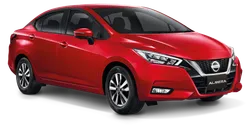

Nissan Almera Generation 2 N16 Overview
Explore the Nissan Almera Generation 2 N16, its features, specifications, and performance. Discover why this model remains a popular choice in Portugal for those seeking reliability.
The Nissan Almera Generation 2, known by its internal code N16, is a vehicle that marked an important era for Nissan in the compact car segment. Launched in 2000 and produced until 2006, the N16 was a successor ...
Technical Specifications
Select Version
Dimensions
Engine
Driving
Others
History and Features
Mycarro AI
Apr 27, 2025
The Nissan Almera Generation 2, known by its internal code N16, is a vehicle that marked an important era for Nissan in the compact car segment. Launched in 2000 and produced until 2006, the N16 was a successor to the first generation Almera (N15), and it aimed to cater to a more diverse market with improved features, technologies, and design enhancements.
Design and Aesthetics
The N16 showcases a departure from the rounded shapes of its predecessor, adopting a more angular and aerodynamic body style. With a slightly elongated front and rear, the N16 presented a more mature and robust look. The new design philosophy aimed to bolster Nissan's presence in the compact car sector while also appealing to a broader audience. The clean lines and well-refined details contribute to an understated elegance, making it a suitable choice for both young and adult drivers.
Interior Comfort and Features
Inside the Nissan Almera N16, comfort was prioritized, with spacious cabin dimensions and a user-friendly layout. The interior featured improved quality materials compared to the N15, providing a more premium feel at an affordable price. The dashboard was well-organized, and the controls were intuitive, making it easy for drivers to access necessary functions while on the road. Moreover, the rear seat space was adequate for its class, offering ample legroom and headroom, making the Almera a compelling option for families and groups.
Engine Options and Performance
The N16 was offered with various engine options catering to different market needs. The petrol engines included a 1.5-liter and a 2.0-liter variant, while diesel enthusiasts could choose from a 1.5-liter turbocharged option. The N16 was built for efficiency, boasting respectable fuel economy ratings, which contributed to its popularity among economical drivers. The vehicle was equipped with a 5-speed manual transmission as standard, while a 4-speed automatic was available for those seeking more convenience.
Safety Features
Safety was another priority of the N16 generation. The compact car came equipped with various safety features, which included dual front airbags, anti-lock braking system (ABS), and advanced crumple zones designed to improve crash safety. The car was subjected to numerous crash tests, performing adequately, which bolstered its reputation as a reliable family vehicle. This emphasis on safety helped Nissan appeal to conscientious consumers who prioritized peace of mind on the road.
Market Reception and Variants
Upon its release, the Nissan Almera N16 quickly gained traction in various international markets, including Europe, Asia, and even the Middle East. While the Almera was well-received as a great value for money, its rivals included models like the Ford Focus, Hyundai Elantra, and Toyota Corolla. The N16 also came in multiple variants, including hatchback and sedan configurations, providing options for diverse customer preferences across global markets.
Conclusion
Overall, the Nissan Almera Generation 2 (N16) stands as a noteworthy entry in the compact car lineup. With its stylish design, improved comfort, thoughtful safety features, and a range of engine options, it appealed to a wide array of buyers looking for practicality without sacrifice. While production ceased in 2006, the legacy of the N16 remains, with many owners cherishing its reliability and performance. As a testament to Nissan’s ability to innovate and adapt to market demands, the Almera N16 continues to hold a special place in the hearts of its drivers.
